You will currently find a total of 22 national parks in Virginia. They vary from nature spots to Civil War monuments; all are pretty easy to visit independently.
This guide will take you through the Virginia National Parks and give reasons for visiting each (and tips on how to do it!)
While Shenandoah National Park is the top sight that comes to mind when people think of Virginia parks, there are plenty more that don’t receive the recognition they deserve.
Virginia National Parks
This is a list of all 22 Virginia National Parks and some information about each of them, including the history, where to stay, and practical information for your visit.
Appalachian National Scenic Trail
Location: Connecticut, Georgia, Massachusetts, Maryland, Maine, North Carolina, New Hampshire, New Jersey, New York, Pennsylvania, Tennessee, Virginia, Vermont, and West Virginia
One of these days I’m going to get in shape so I can even hike the slightest part of this. But for now, I’ll dream about doing it.
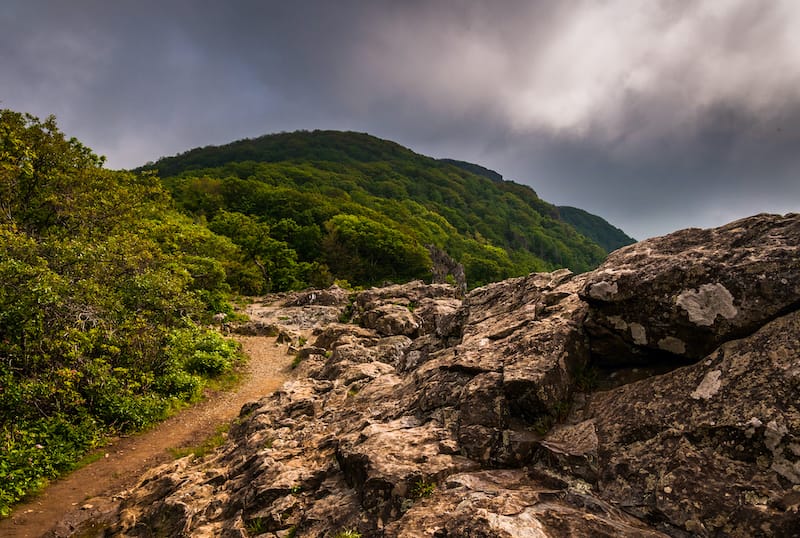
The Appalachian Trail extends for over 2,180 miles and goes all the way from Mount Katahdin in Maine to Springer Mountain in Georgia.
And, of course, the largest portion passes through the state of Virginia (544 miles of it). It is definitely one of the coolest things to do in Virginia and on the East Coast.
The trail runs through the Appalachian Mountains and is currently the longest hiking trail in the world. Private citizens began planning the project in 1921, and they finished it in 1937.
Today, the Appalachian Trail is managed by the National Park Service, US Forest Service, Appalachian Trail Conservancy, and other agencies, along with a healthy number of volunteers.
If you plan to embark on a journey through Virginia’s Appalachian Trail, be sure to have a map handy and to do some reading beforehand so you know about the terrain and history of the area that the trail passes through.
Below are some suggested readings to indulge in before your journey:
- Along Virginia’s Appalachian Trail by Leonard M. Adkins
- Appalachian Trail Guide to Central Virginia by Appalachian Trail Conservancy
- Exploring the Appalachian Trail: Hikes in the Virginias by David Lillard
- Hiking Shenandoah National Park by Robert C. Gildart
The Appalachian Trail is a must-visit for nature lovers and hiking enthusiasts in the state of Virginia.
Appomattox Court House National Historical Park
Location: Appomattox, Virginia
One of the most important Civil War landmarks in the United States is in a village in Virginia. This is where the Northern Virginia Army surrendered at the McLean House, resulting in the end of the Civil War on April 9, 1865.
At Appomattox Court House, the decision to proceed as one, unified nation without slavery was agreed upon, and a ‘new’ United States was born.
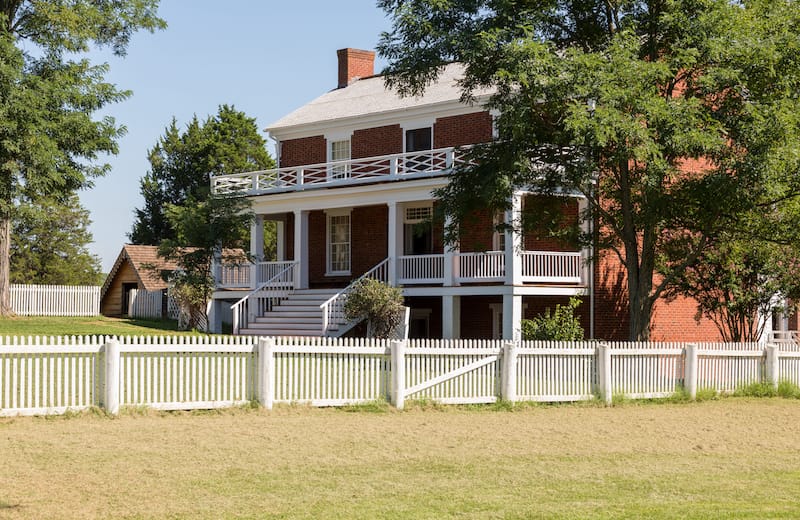
Today, you’ll find over a dozen buildings that include a museum, theater, souvenir shops, and more in Appomattox. The oldest building is Sweeney Prizery, a house for tobacco packing that dates back as far as somewhere between 1790 and 1799.
There are also hiking trails in the area, and it is recommended to take at least two hours to visit everything.
Arlington House (Arlington National Cemetery)
Location: Arlington, Virginia
The Arlington House is a place that is dedicated to Robert E. Lee in Arlington, Virginia.
The memorial was dedicated to him in 1925, and it is suggested that the place was dedicated to paying him respects for the reconciliation of the North and South after the Civil War.
Built in a Greek revival mansion style, this Arlington sight was actually once the home of Robert E. Lee and his wife. It overlooks the Potomac River and another very famous sight in Washington D.C., the National Mall.
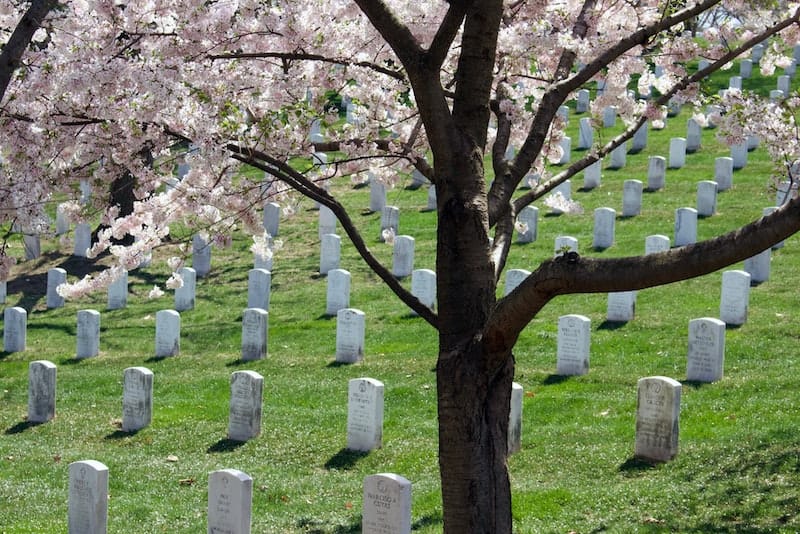
What makes this place actually worth visiting is that it is also the home of Arlington National Cemetery and was selected as such during the Civil War. This is also where the Tomb of the Unknown Soldier is located.
Today, you will find that Arlington National Cemetery is the final resting place for many familiar names, such as Thurgood Marshall, President John F. Kennedy, Marguerite Higgins, and more.
Assateague Island National Seashore
Location: Virginia and Maryland
One of the coolest places to visit in Virginia (and Maryland) and definitely one of the state’s most alluring national parks is Assateague Island National Seashore.
This national park sits on the Eastern Shore of Virginia, right north of Chincoteague. My favorite thing about this area is that time kind of stands still, but nature is ever-changing. Assateague is home to marshes, maritime forests, and beautiful, sandy beaches.
The island stretches for 37 miles and spans both a portion of Virginia and Maryland. The Virginia portion is managed by the US Fish & Wildlife Service, and it is part of the Chincoteague National Wildlife Refuge.
The barrier island is known mostly for its wild horses and the famous Assateague Lighthouse that captivates visitors from all over the globe.
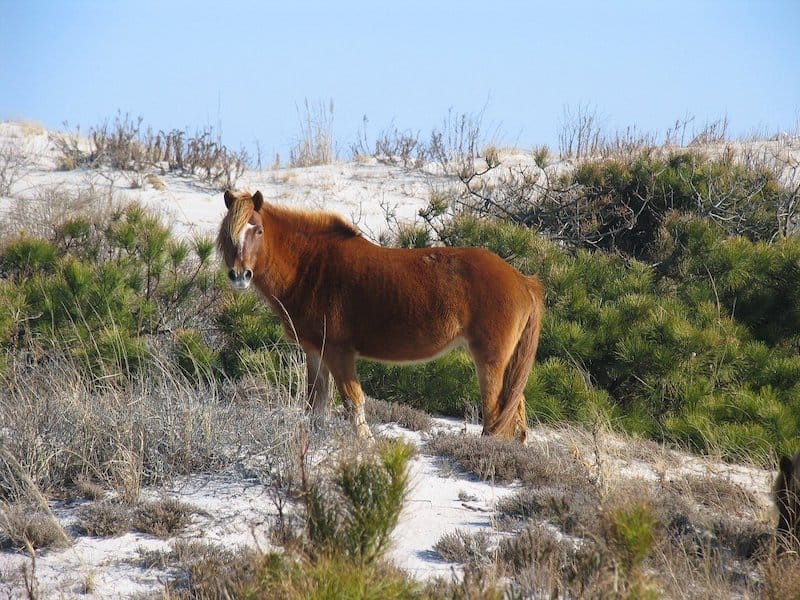
To be honest, Assateague is one of my favorite places to visit in Virginia. I never had a chance to go there or to Chincoteague until I was an adult, but aside from the ruthless mosquitoes, I find it to be an utterly perfect place.
If you grew up in the era that I did, you may remember reading a book about a wild horse living on Chincoteague called Misty.
If you grew up in a different era, you can get your hands on a copy of Misty of Chincoteague here. This book was the main reason I knew about the barrier island in the first place!
Nevertheless, there are many amazing things to do in Chincoteague and Assateague and it is a must-visit place on Virginia’s Eastern Shore.
Blue Ridge Parkway
Location: Virginia and North Carolina
This is easily one of my favorite drives in North America, and it sure is one of the most scenic! The Blue Ridge Parkway is a relaxing drive that winds through the Appalachian Mountains through Virginia and into North Carolina.
It goes for a whopping 469 miles and it is definitely one of the most scenic places in the world during fall (but definitely doesn’t disappoint during other seasons).
The Blue Ridge Parkway was built during the 1930s as one of the projects of the President Franklin Delano Roosevelt Works Progress Administration.
It winds through the colorful Blue Ridge Mountains, hence the name, and will take you to places where log cabins and gorgeous forests are a dime a dozen.
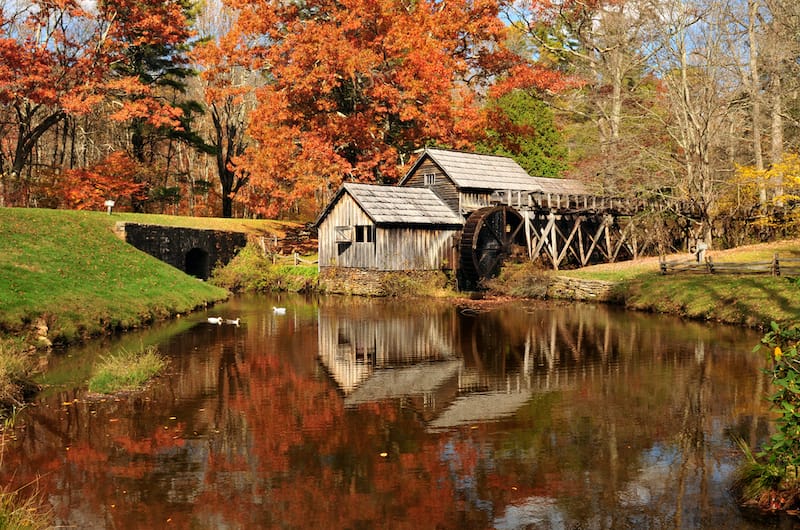
Built under the direction of architect Stanley W. Abbott, some of the most famous places along the Blue Ridge Parkway (and worth a stop!) are Mabry Mill, the Blue Ridge Music Center, and a farm from the 1890s called Humpback Rocks.
Booker T. Washington National Monument
Location: Hardy, Virginia (Franklin County)
This is the birthplace of Booker T. Washington, one of the most famous names in African-American history in the United States.
Booker T. Washington was born a slave in 1856 on a farm in Franklin County, Virginia belonging to James Burroughs.
He later went on to become the first principal of the Tuskegee Normal and Industrial School. He spent the remainder of his life speaking, advising, and writing books.
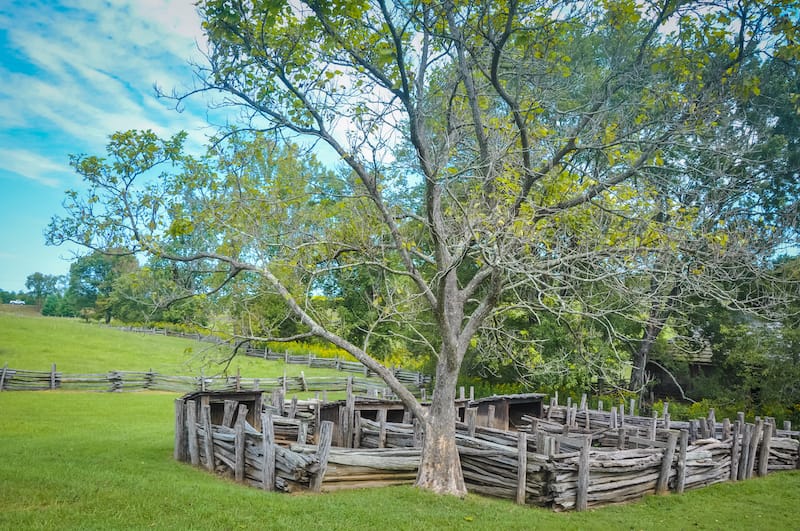
This Virginia National Monument is most definitely worth a visit for everyone from individuals to families and children.
In addition to learning more about the influential, yet tough life of Washington, you can also walk along the Plantation Trail and see where he lived as a child.
Before visiting Booker T. Washington’s birthplace in Virginia, I highly recommend reading some narratives by him or information about his life and impact on the United States. It will create a far more tangible experience.
- Up From Slavery by Booker T. Washington
- Up from History: The Life of Booker T. Washington by Robert Norrell
- Character Building: Addresses Delivered on Sunday Evenings to the Students of Tuskegee Institute by Booker T. Washington
Cedar Creek and Belle Grove National Historical Park
Location: Middletown and Strasburg, Virginia
Authorized on December 19, 2002, the Cedar Creek and Belle Grove National Historical Park became the 388th unit of the US National Park Service and was created to protect many landmarks of historical importance in the Shenandoah Valley.
The area was the site of the Civil War battles of Cedar Creek and Belle Grove Plantation.
While much of the battlefield is not available to the public currently, you can take self-guided driving tours on local roads and have park ranger tours. The land and buildings are well-preserved.
Colonial National Historical Park
Location: Jamestown and Yorktown, Virginia
Colonial National Historical Park encompasses several sites from early American history, including Historic Jamestown, Yorktown Battlefield, Green Spring Plantation, Cape Henry Memorial, and the Colonial Parkway.
Jamestown was the first successful colonization by English settlers in North America.
When you visit the historic town, you can see the foundations of old homes and businesses, visit the church, and see a demonstration of glass-blowing in the 17th-century style.
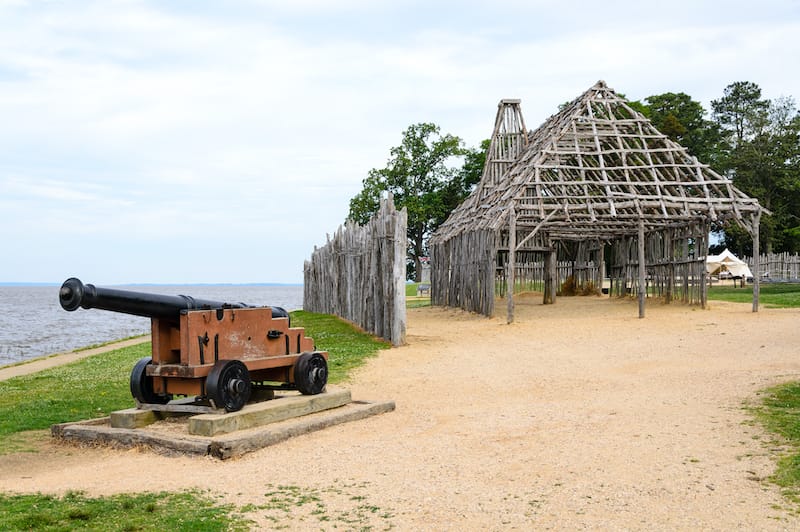
Yorktown was where the last battle of the Revolutionary War took place. This is where British General Cornwallis surrendered in 1781, ending the war and guaranteeing independence for the colonies.
The Cape Henry Memorial was the site of the first landing of colonists who would go on to set up Jamestown.
Green Spring Plantation was owned by Sir William Berkeley, who used it as an experimental farm to find other profitable exports besides tobacco and fur.
Though the old manor house is not standing anymore, you can still see architectural remnants of the house and other structures.
All of these sites are close together so you can connect them with a scenic drive along the Colonial Parkway, which stretches from Jamestown to Yorktown and goes through Williamsburg.
Cumberland Gap National Historical Park
Location: Virginia, Tennessee, and Kentucky
The beautiful Cumberland Gap is a pass-through a long ridge in the Cumberland Mountains, which is part of the Appalachian chain. This pass is of historical significance because it was the gateway to lower Appalachia in colonial times.
The gap is very close to the crossroads of the Tennessee, Virginia, and Kentucky state lines.
First used by Native Americans, it became a popular route for pioneers when Daniel Boone led an expedition through the pass. By the 1790s, the trail through the pass was made wide enough to become a frequently used route for wagons, traders, and settlers.
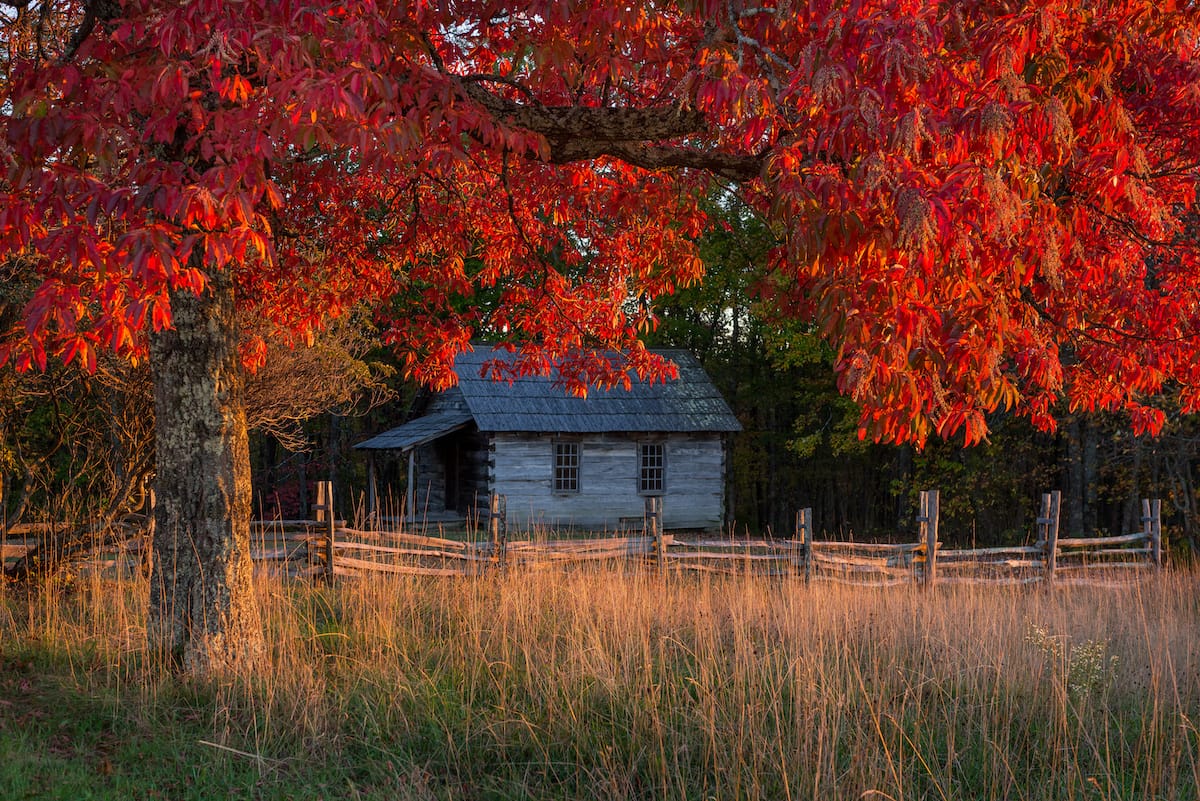
You can see remnants of Civil War fortifications here as well, as it was the site of several skirmishes in the war.
In June 1862, the Battle of Cumberland Gap occurred and the area was taken under Union control.
Over one million people visit the Cumberland Gap National Historical Park annually. There are over 85 miles of nice hiking trails in the park as well as areas to camp.
There is no entrance fee to the park. You can visit the Visitor’s Center for more information about the park.
Fort Monroe National Monument
Location: Hampton, Virginia
Fort Monroe National Monument is a decommissioned military fort in Hampton, Virginia, on the tip of the Virginia Peninsula.
Before disarmament in 1946, it guarded the Chesapeake Bay and the Potomac River region. Fort Monroe is famous for being the landing point for the first Africans brought over to North America.
In 1619, the White Lion ship landed at “Old Point Comfort” (the old name of the point) with 20-30 Africans aboard.
These Bantu people, originally from Angola, had been captured by a slave ship and were the first Africans to arrive in the colonies.
This is considered the beginning of slavery in Colonial America, which continued until it was finally abolished in 1865.
Fort Monroe is a large complex that includes 170 buildings. Although the area has been a strategic point with some type of fort on it since the early 1600s, Fort Monroe was built in the first half of the 1800s.
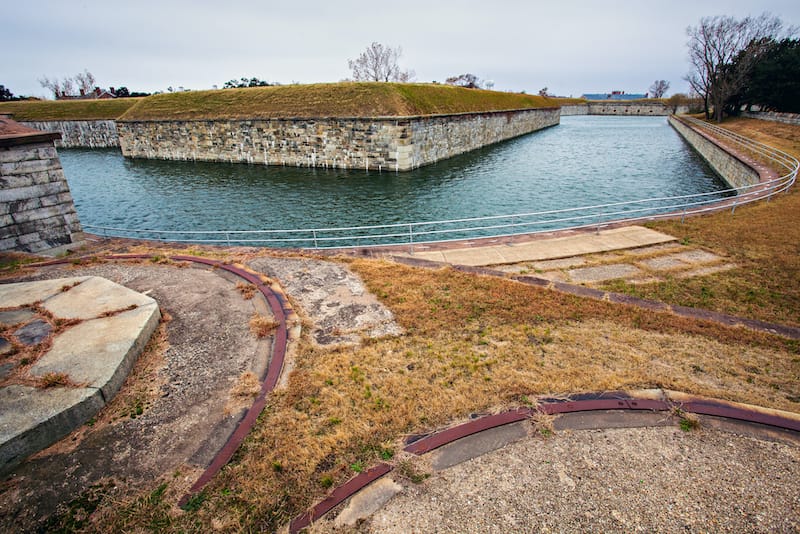
During the Civil War, though Virginia was part of the Confederate States, Fort Monroe was always under Union control.
Confederate President Jefferson Davis was imprisoned there for two years, and it also became a point where many slaves gained their freedom, thus earning the nickname “Freedom’s Fortress”.
Today you can visit the fort as well as the Casemate Museum, which tells about the history of the fort since the early 1600s. Both the fort and the museum are free of charge.
Fredericksburg and Spotsylvania National Military Park
Location: Fredericksburg, Virginia
This park was established in 1927 to preserve and commemorate four major Civil War battlefields: Fredericksburg, Chancellorsville, the Wilderness, and Spotsylvania.
These four battles were some of the bloodiest of the Civil War, with over 85,000 soldiers wounded and 15,000 killed. Many soldiers were buried in mass graves.
Fredericksburg Cemetery has 15,243 interments from the Civil War, and out of those only 2,473 were identified.
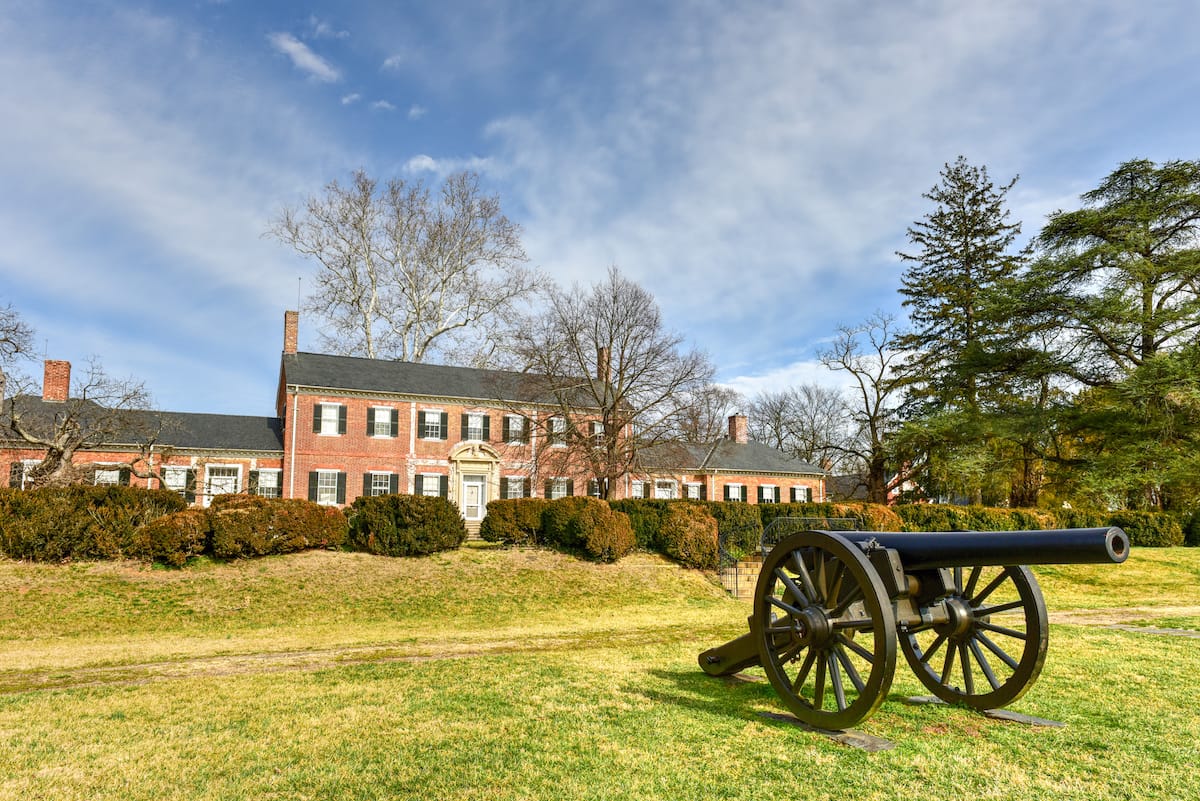
At Fredericksburg Battlefield, you will find a visitor’s center with free exhibits, Chatham Manor, which served as a Union headquarters, and a guided walking tour of Sunken Road.
At Chancellorsville, there is a visitor’s center and the Jackson Wounding walking tour.
At The Wilderness Battlefield, there is an open-air exhibit shelter instead of a visitor’s center. You will also find a walking tour as well as Ellwood Manor here.
Finally, at Spotsylvania Battlefield, there is an open-air exhibit shelter and walking tour. Other locations of interest include the house where Stonewall Jackson died and the old Salem church, which served as a field hospital during the battle at Chancellorsville.
Grounds are open from sunrise to sunset, and you can check the park’s website to find the visitor centers’ opening hours and walking tour schedules.
George Washington Birthplace National Monument
Location: Westmoreland County, Virginia
The land that this monument is on was first developed as a colonial tobacco plantation in the mid-1600s by John Washington, the great-grandfather of George Washington. It was kept in the family and George was born there on February 22, 1732.
Unfortunately, the original house is not standing anymore, but you can still see the foundations. A memorial house built in colonial style was built in the 1930s.
Along with the Memorial House and the foundations of the original house, you can see other replicas of historic buildings when you visit this national monument.
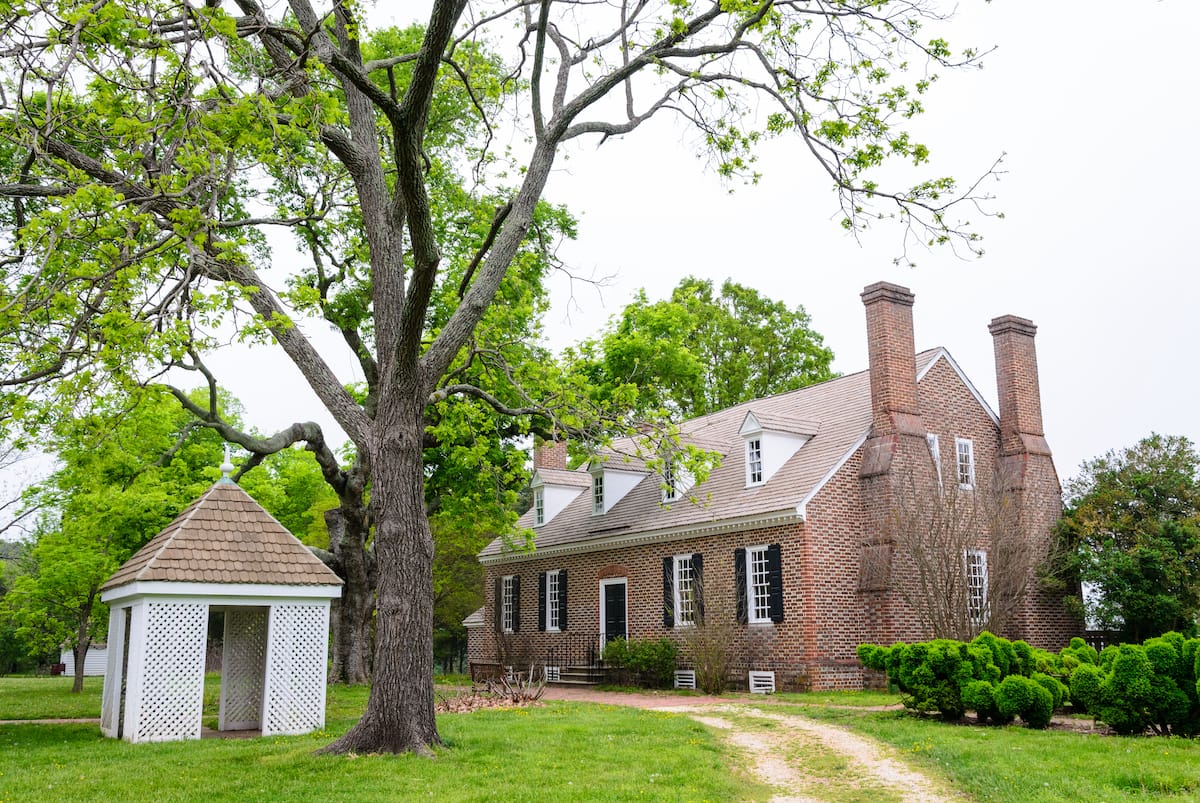
There is a kitchen house, an herb and flower garden, hiking trails, Washington family burial grounds, a living farm, and picnic grounds.
In the kitchen house, you can see costumed reenactors demonstrating how candles and soap were made back in the early days of the colonies.
In the garden, you can find plants that were very common in Washington’s time. At the farm, all the animals and crops were typical of the 18th century, and farming methods from that time were used to care for them.
You can find out more information about the history of this location by visiting the Visitor’s Center at the site. There are also areas to hike, places to have picnics and access to the Potomac River Beach.
George Washington Memorial Parkway
Location: Northern Virginia
The George Washington Memorial Parkway is a 25-mile-long parkway that goes along the Potomac River from Mount Vernon, Virginia, over Columbia Island, ending in McLean, Virginia.
There are many interesting and historical sights along this road. Some points of interest along the road are Mount Vernon Plantation, Huntley Meadows Park, Fort Hunt Park, Dyke Marsh, Jones Point, and Woodrow Wilson Bridge.
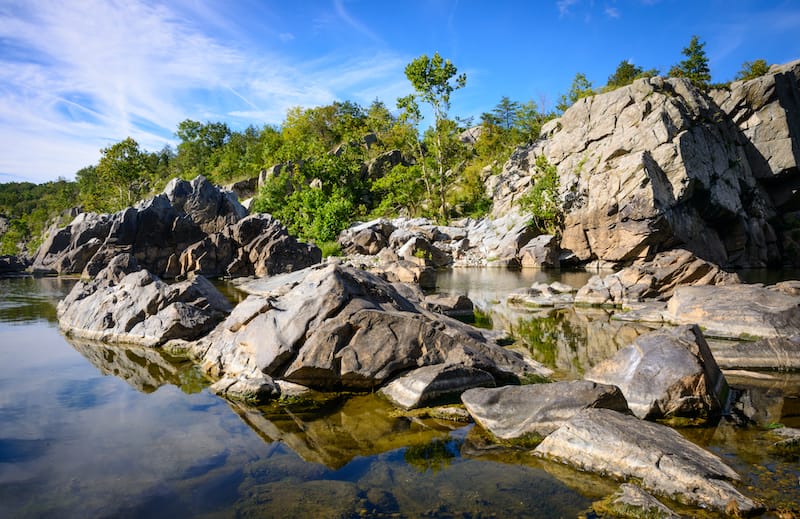
While driving on this route, you will go through Mount Vernon, Alexandria, Arlington County, and Columbia Island. This road also gives automobile access to Theodore Roosevelt Island, LBJ National Grove, Gravelly Point Park, Fort Marcy, Columbia Island Marina, and Turkey Run Park.
There are also scenic lookouts along the way, where you can see the Georgetown skyline and the Potomac Palisades.
Harpers Ferry National Historical Park
Location: Virginia and West Virginia
Harpers Ferry National Historical Park is located at the confluence of the Potomac and Shenandoah rivers.
There are many things to do here, such as visiting exhibits and museums, hiking the trails, seeing old battlefields, and strolling the quaint streets.
The park is almost 4,000 acres and encompasses the whole historic town of Harpers Ferry.
The town was originally founded by Robert Harper, who began a ferry business there in the 1750s. The house built by Harper is the oldest remaining structure in the park.
Several famous historical figures have passed through this area, including George Washington, Lewis and Clark, and abolitionist John Brown.
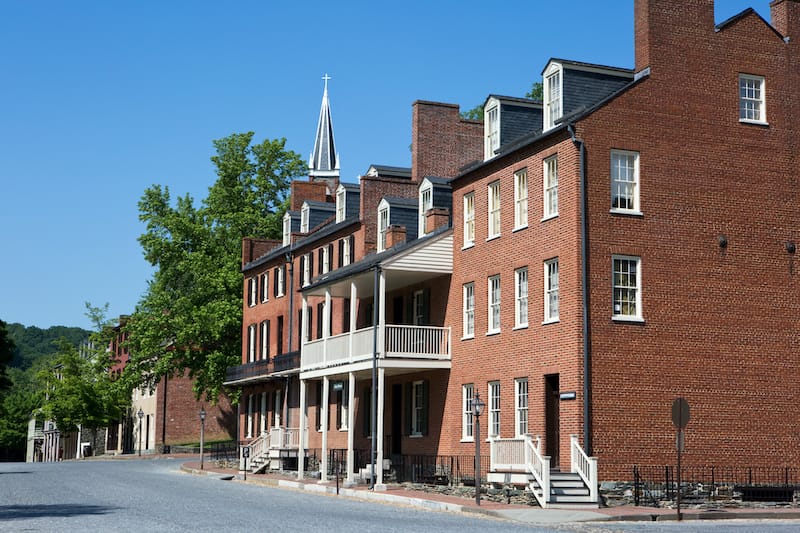
In 1859, John Brown led an armed group to capture the armory there in hopes of arming slaves and overthrowing slavery. Harpers Ferry also became a coveted location during the Civil War, being on the border between the North and South.
There are many historical things to learn about Harpers Ferry, and you can find out more at the museums in the town.
Besides museums and historical points of interest here, there are also many outdoor recreational opportunities. You can fish, boat, whitewater raft, and hike in Harpers Ferry Park. The famous Appalachian Trail passes right through the park.
Harpers Ferry is one of the best places to visit in West Virginia and Virginia!
Maggie L. Walker National Historic Site
Location: Richmond, Virginia
The Maggie L. Walker National Historic Site, located in Richmond, Virginia, pays tribute to a pioneering businesswoman and civil rights activist.
Maggie Walker was born in 1864 to a former slave. She grew up in Richmond and was active in helping her community from a young age.
She grew up and published a newspaper, The St. Luke Herald. Walker then went on to found a bank, the St. Luke Penny Savings Bank and served as the bank’s first president.
She became the first African-American woman to charter a bank. When her bank merged with two other banks, she became the chairman of the board of directors.
She was a teacher, businesswoman, bank president, and civil rights activist in her lifetime, speaking up for women and African Americans in the Jim Crow era.
The National Historic Site consists of six buildings in the Jackson Ward neighborhood of Richmond. The buildings include a museum, the Visitor’s Center, and the Maggie Walker House.
This house is furnished with the original belongings of Maggie Walker, with period furniture dating back to the 1920s.
If you’re keen to learn a bit more about Maggie Walker and her life, check out this book that gives details about her background and impact on Virginia and the rest of the US.
Manassas National Battlefield Park
Location: Manassas, Virginia
Manassas National Battlefield Park is the location of two major Civil War battles—the First and Second Battles of Bull Run. On July 21, 1861, the two armies battled for the first time in Bull Run.
In August 1862, they met again, with the Confederate side winning a solid victory.
This brought them to the peak of their power. This battlefield is also where General Thomas J. Jackson got his nickname, “Stonewall.”
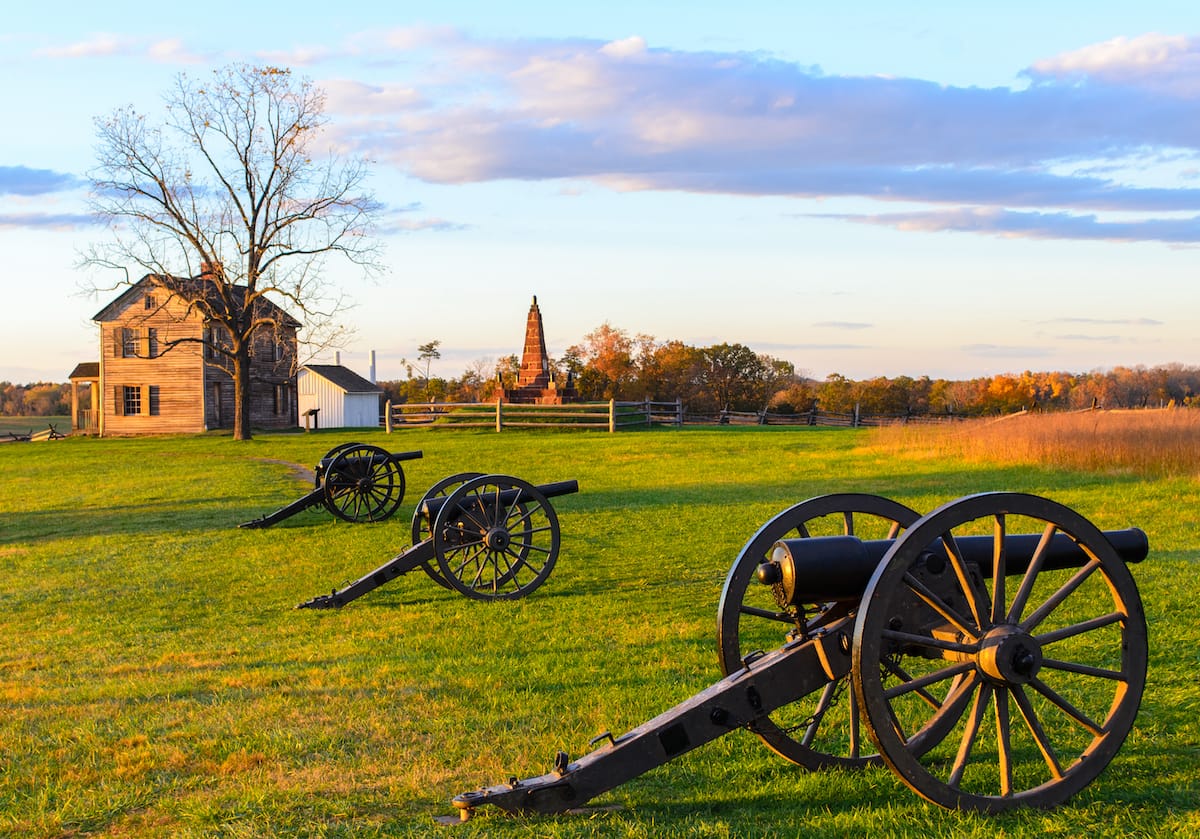
You can visit this battle site and discover more about the history, view a battle map, and see Civil War-era uniforms, weapons, and field gear in the Visitor’s Center.
Other historic sites in this park include Stone House which was used as a hospital, Stone Bridge where the Union army retreated after the second battle, Matthews Hill where the first battle began, Groveton which was an extinct Civil War-era village, Portici which was the plantation of Francis Lewis and used as the Confederate headquarters in the first battle, and the Stonewall Jackson Monument, among others.
Click here if you’re looking for the other best things to do in Manassas VA!
Overmountain Victory National Historic Trail
Location: Virginia, Tennessee, North Carolina, and South Carolina
The Overmountain Victory National Historic Trail stretches 330 miles through the states of Virginia, Tennessee, North Carolina, and South Carolina.
The trail traces the route of the patriot militia used in the Kings Mountain campaign of 1780.
It was used by patriots to cross over the Appalachian mountains, after which they fought in the Battle of Kings Mountain in South Carolina.
This was a significant battle as it was a decisive victory for the Patriot army against the Loyalists. After a string of losses for the Patriot army, this battle was a pivotal moment and greatly raised their morale.
You can follow the campaign trail by car on the Commemorative Motor Route on existing highways marked with the trail logo, or on foot on the 87 miles of walkable trails.
This trail was officially designated as a national historic trail in 1980. A commemorative march takes place each September and October. The walking trails are open year-round from dawn until dusk.
Petersburg National Battlefield Park
Location: Petersburg, Virginia
Petersburg National Battlefield preserves the sites related to the Siege of Petersburg during the Civil War. For nine and a half months, a series of battles were staged around Petersburg, Virginia.
Over 70,000 soldiers died during this period. In the end, General Grant cut off all the supply lines to Petersburg, which ensured the fall of Richmond.
Six days after this, on April 9, 1865, General Lee surrendered. One notable feature of this siege was the use of trench warfare, which was a precursor to the trench warfare common in World War I.
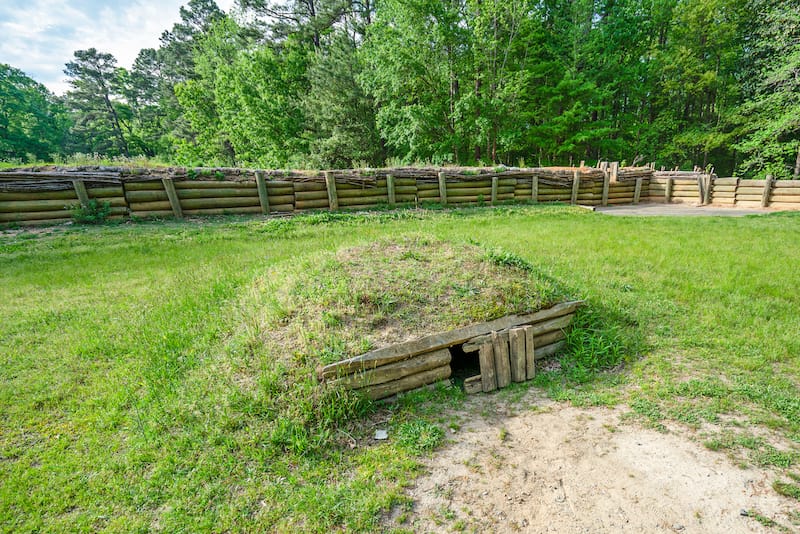
There were also significant numbers of African-American troops, the largest concentration of the war, that fought in these battles.
The park consists of four different units. The first is the visitor center and road. Here you can pay the entrance fee, see exhibits and movies about the Siege of Petersburg, as well as Battery #5.
After you leave the Visitor Center, you begin the park tour. Along the way, you will see Fort Stedman and the Crater. The next battlefield on the route is Five Forks.
This is sometimes called the “Waterloo of the Confederacy” and helped set in motion the events that led to Lee’s surrender.
Next to the James River is City Point, which was the command center and logistics hub for the Union Army. The last unit of the park is the Poplar Grove National Cemetery.
Potomac Heritage National Scenic Trail
Location: Virginia, Maryland, Pennsylvania, and Washington D.C.
This trail corridor connects various historic sites and trails in Virginia, Pennsylvania, Maryland, and the District of Columbia. It follows the Potomac River for 710 miles. This trail is a general route with many separate side trails you can follow.
There are a variety of places you can see on this trail, such as Georgetown, D.C., Mount Vernon, and Conemaugh Gorge.
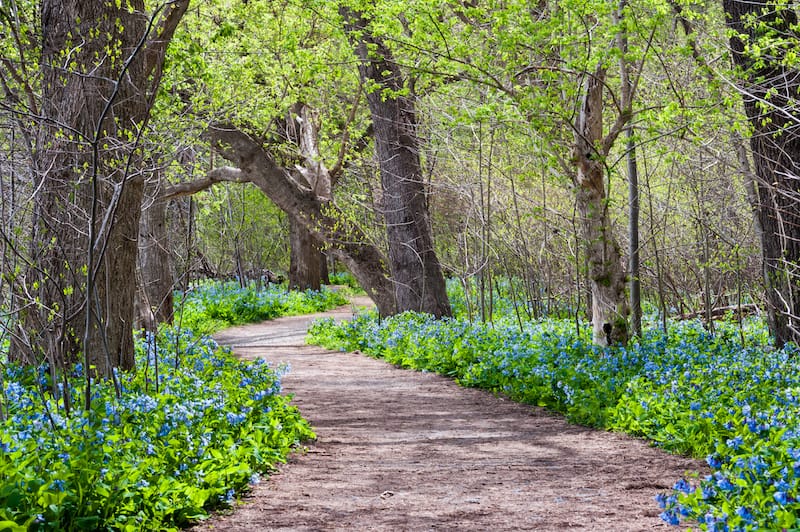
The Potomac Heritage Trail crosses the Appalachian Trail near Harpers Ferry and coincides with the American Discovery Trail for the portion from Oldtown, Maryland, to Washington D.C.
There are several ways to enjoy these trails: through hiking, biking, or paddling down the Potomac. You can learn more about nature, wildlife, and history anywhere in the trail network. It is one of the most visited national parks in Virginia.
Prince William Forest Park
Location: Triangle, Virginia
This natural refuge is only a short distance from Washington, D.C., and is over 16,000 acres. It is a peaceful area where you can get away from the hustle and bustle of city life and experience nature.
There are many things to do in Prince William Forest Park, including wildlife viewing, hiking on the 37 miles of trails, biking on the 21 miles of bike-friendly trails, and tent, cabin, or RV camping.
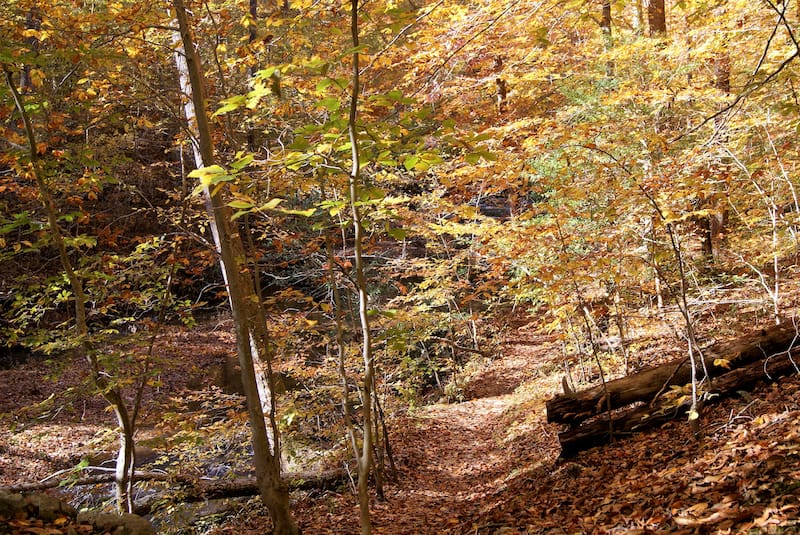
The park was established in 1936, and you can still see the remnants of three towns that were evicted for the park’s establishment and remnants of the Pyrite Mine.
You can also follow Quantico Creek for views of its beautiful waterfalls. There are many animal species you can look out for, including box turtles, different types of toads and frogs, many bird species, as well as mammals such as foxes, beavers, deer, black bears, and coyotes.
Richmond National Battlefield Park
Location: Richmond, Virginia
Richmond National Battlefield Park commemorates thirteen different sites from the Civil War in Richmond, Virginia, which was the capital of the Confederate States of America.
Being the capital, it was an important city and saw much combat over the period of the Civil War.
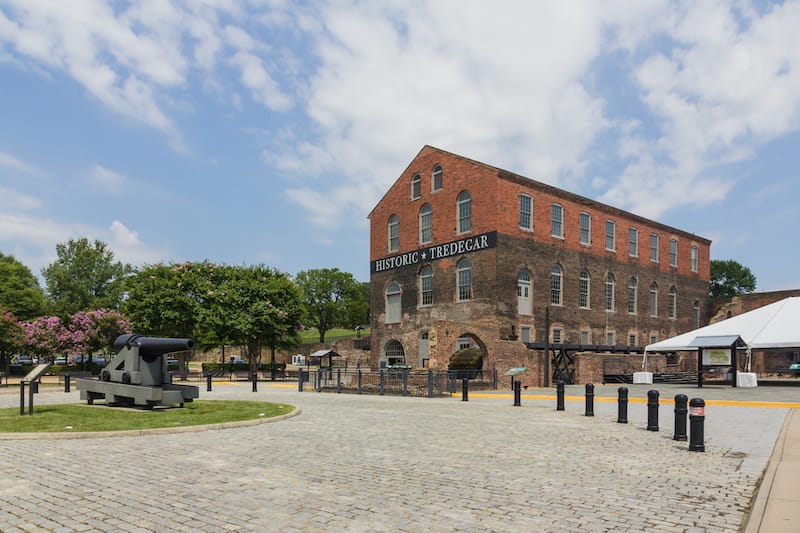
This park covers nearly 3,000 acres of land and looks much like it would have in the Civil War era, with meadows and old-growth forests. You can spot many different species of wildlife in the park.
There are quite a few old sites to see in the park, including Tredegar Iron Works. These ironworks supplied half the artillery used by the Confederate army and were a big factor in the decision to make Richmond the capital.
There is a visitor center and a Civil War museum at this site. You can also visit Chimborazo Hospital, which was the largest medical camp in the Confederacy, holding up to 4,000 patients at a time.
Some battlefields that you can visit include where the Peninsula Campaign, the Seven Days Battles, the Overland Campaign, and the Siege of Petersburg all took place.
Shenandoah National Park
Location: Western Virginia
Shenandoah National Park is a huge swath of land encompassing part of the Blue Ridge Mountains in Virginia. It is over 200,000 acres of protected land, full of wildlife, fields of flowers, forests, some of the best waterfall hikes in Virginia, and rivers.
The park is best known for Skyline Drive, which is a 105-mile-long road that runs the length of the park. It is also probably the most famous national park in Virginia.
The Appalachian Trail also coincides with the park area for 101 miles. There are over 500 miles of trails in the park in total. The highest point in the park is Hawksbill Mountain, at an elevation of 4,051 feet.
There are many things to do and explore in Shenandoah National Park. Popular activities include hiking, fishing, camping, biking, and horseback riding.
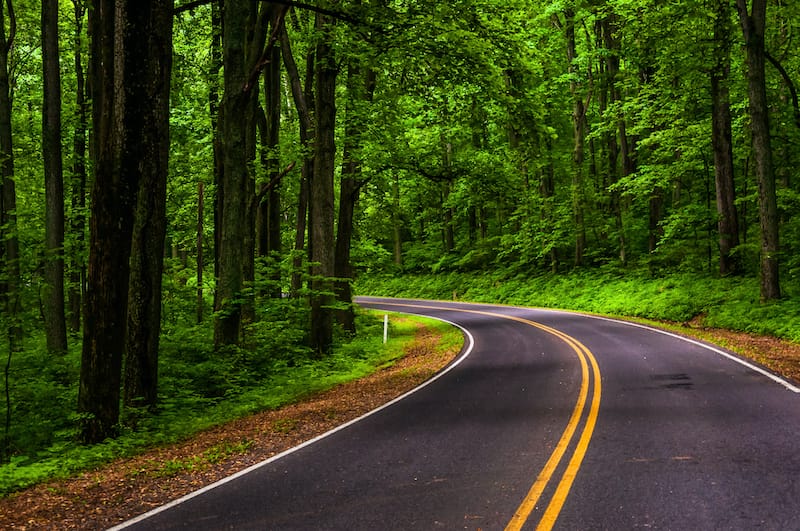
There are several options for camping: lodges, cabins, tents, and backcountry camping.
The park is also very dog-friendly, with only ten trails not allowing dogs, which amounts to only about 20 miles out of the 500 miles of trails. Dogs are also allowed in all the campgrounds.
This Virginia National Park and the area surrounding it are also home to some of the most famous caverns in Virginia. You can visit many of these commercial caves and see the world from a different perspective.
If you are interested in learning more about the park, park rangers organize several programs in the spring and fall.
You can take a ranger-led hike or attend a discussion about the flora, fauna, and history of the park. You can check the National Park website for more details and scheduled events.
Wolf Trap National Park for the Performing Arts
Location: Vienna, Virginia
This special park offers both natural and cultural resources, being a performing arts center located on national parkland. It is a collaboration between the National Park Service and the Wolf Trap Foundation for the Performing Arts.
You can explore the park grounds by taking a hike on one of the trails located in the park, as well as see one of the many performances the Wolf Trap Foundation puts on.
There are several performing arts centers on the grounds, including the Filene Center, the Children’s Theatre in the Woods, and the Meadow Pavilion.
The Filene Center is the main performance hall and is an indoor/outdoor center that seats 7,000 people, including lawn seating.
They host many performers throughout the summer months of many different genres, like jazz, country, opera, musicals, and dance performances.
You can check the website to see the schedule of upcoming shows and get tickets.
These are the 22 National Parks in Virginia with a bit of background on how to visit them! If you have a favorite, please let us know below!

Megan is a travel blogger and writer with a background in digital marketing. Originally from Richmond, VA, she has lived all around the world (including Germany, Finland, Norway, etc) but her heart always finds its way back to Virginia. This blog is to help encourage travelers to explore the great state of VA… and its wonderful neighbors! Megan has written for or been featured by National Geographic, Forbes, Lonely Planet, Fodor’s Travel, the New York Times, and more. She has visited 45 US states and 100+ countries… and wholeheartedly believes that Brunswick Stew is probably the greatest food to ever exist.

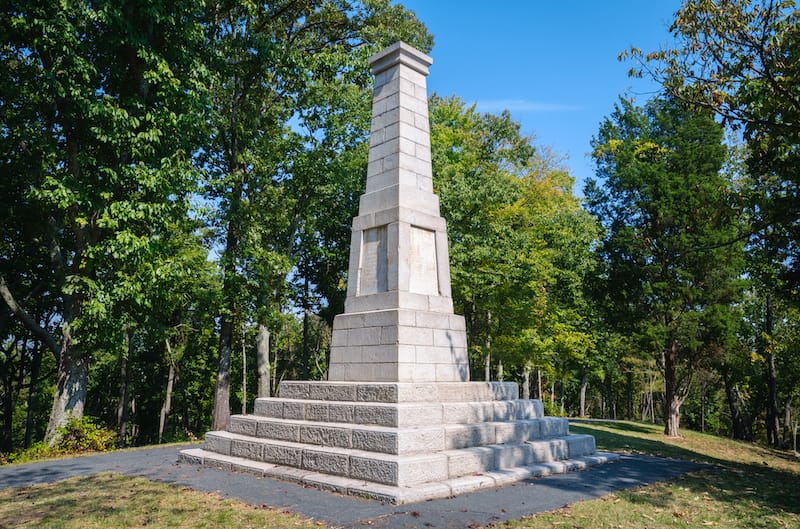
I loved this article as I’m a huge NPC nerd. But FYI you left out the newest National Park, New River Gorge!
Great article but I do not see a separate entry for Great Falls National Park in Fairfax County.
Not in Virginia
One side of Great Falls National Park is in Virginia, the other (across the river) is in Maryland. I’ve never been at the Maryland side, but the Virginia side is great.
eye and heart opening!